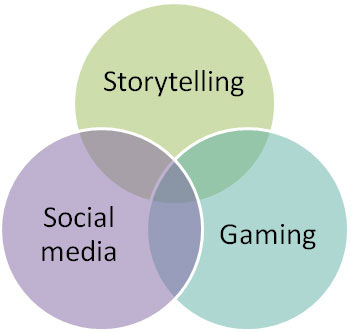More thoughts on teaching flash fiction
After introducing students to flash fiction, how can you help them write their own?
The first thing I would do is discuss the differences between, say novels and short stories and the considerations writers need to take in each. For example, one area might be eliminating unnecessary information or making sure details push the plot forward. Perhaps a simple wiki page could be used for students to systematically delete these excess details in class and outside. This is not the most creative idea but I mention it to highlight the simple advantages of editing functions in digital environments over paper.
For more considerations, a quick google search brings up a whole variety of advice like this https://litreactor.com/columns/storyville-how-to-write-flash-fiction or this http://flashfictiononline.com/main/2015/04/thirteen-tips-for-writing-flash-fiction/ , but quite a lot of it is conflicting. So rather than ask questions or impose one way of writing flash fiction it might be a nice idea to get your students to come up with advice for each other. Students could do some research online and come to their own conclusions, or perhaps their own top ten tips. This could be followed by a pyramid discussion, where groups combine and reduce the number of tips until they agree on a top 5 list.
From choose your own adventure to interactive fiction
In my last post I used the terms 'choose your own adventure' and 'interactive fiction' interchangeably but now I've come to realise that a distinction needs to be made. As far as I understand it, choose your own adventure stories have their roots in children's books in the early eighties. At the end of each page or chapter the reader is presented with choices and corresponding page numbers. Interactive fiction (IF), on the other hand, comes from text based digital environments where the reader/player uses commands to explore and solve puzzles.
A couple of weeks ago I mentioned a piece of interactive fiction called Playspent and the way it uses point of view to develop empathy in the reader/player. I recently tried another story called Lifeline, which has a similar effect. In Lifeline you receive messages from a stranded astronaut and help him/her survive. Messages arrive over a couple of days to add to the realism and you engage in a kind of conversation as the astronaut describes the situations. This approach allows for more linguistic complexity than the standard present tense 2nd person perspective of most adventure stories. The astronaut acts as narrator and can therefore vary tenses to reveal backstory elements. But what I really like is the way you interact with the story and the character, giving advice or choosing supportive or motivational comments. I killed the astronaut a couple of times before getting to a happy ending. https://itunes.apple.com/en/app/lifeline.../id982354972?mt=8
Images
https://upload.wikimedia.org/wikipedia/commons/b/bb/Aldrin_Apollo_11_(jha).jpg
https://upload.wikimedia.org/wikipedia/commons/7/71/Pyramid_of_Khafre_Giza_Egypt_in_2015_2.jpg
https://upload.wikimedia.org/wikipedia/commons/c/cd/HypertextEditingSystemConsoleBrownUniv1969.jpg






